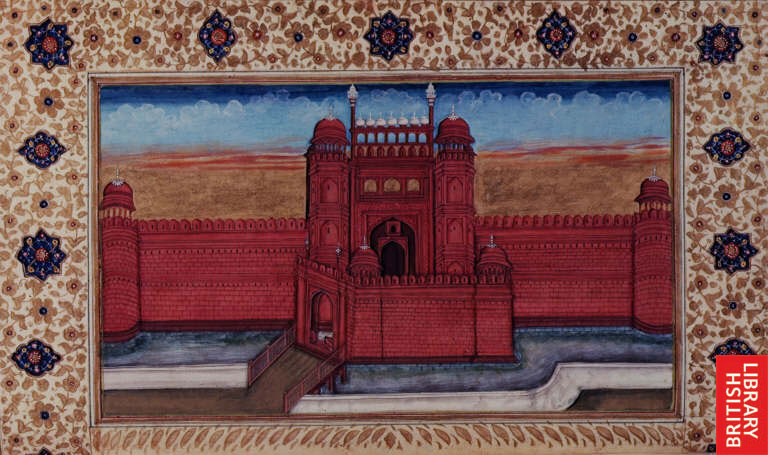

*Red Fort at Delhi [Lahori Gate]; from 'Amal-i Salih, by Muhammad Salih Kanbu, 1700's* (BL)
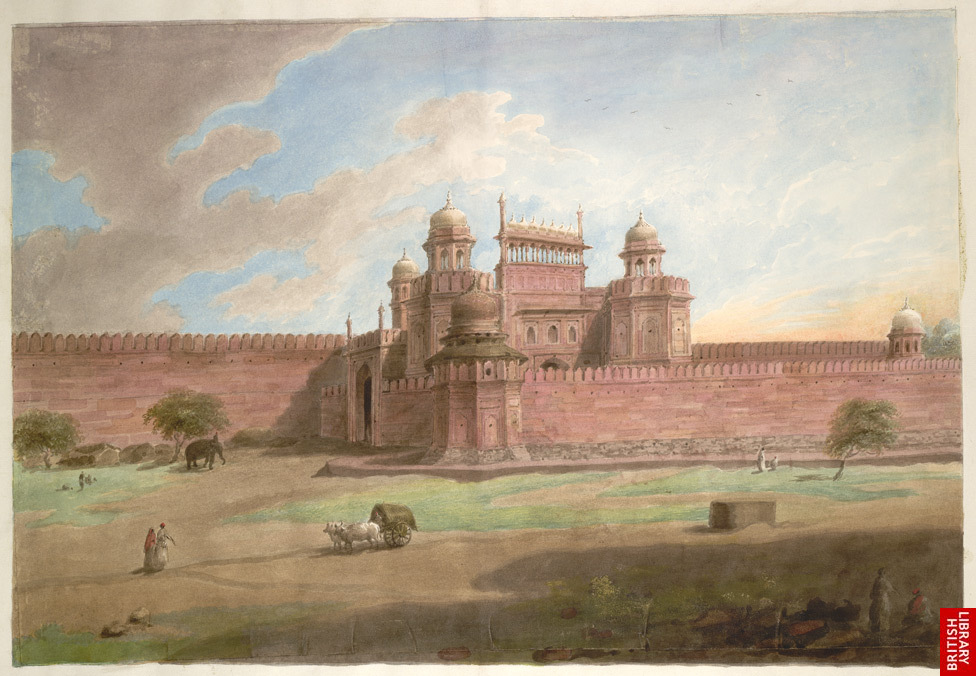
*The Lahore Gate of the Delhi Fort, by Sita Ram, 1814-15* (BL)
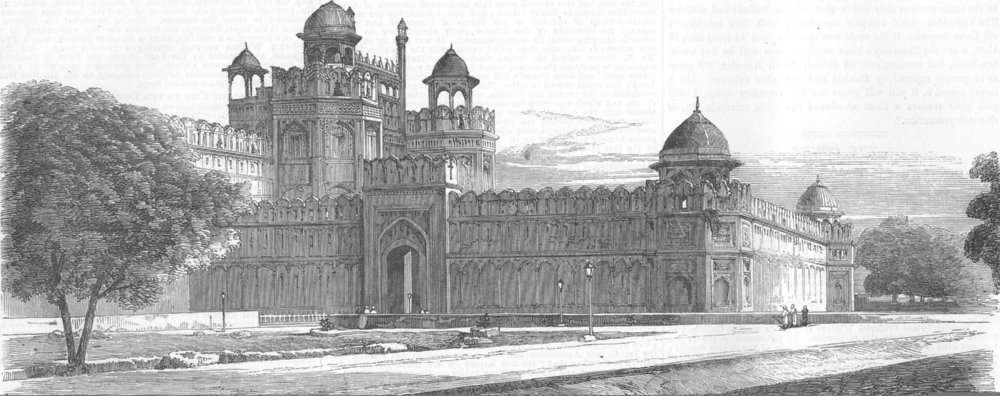
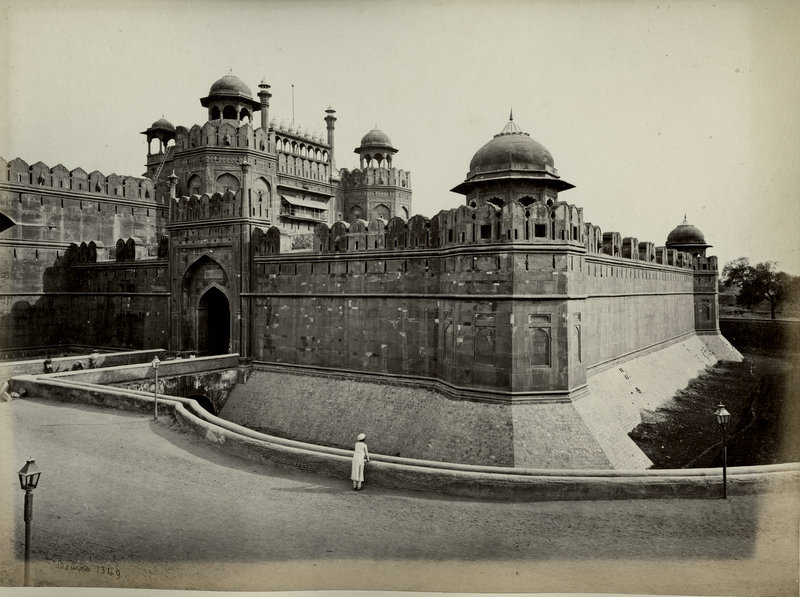
*"Lahore Gate, Palace, Delhi," from the 1870's; an engraving captioned in English and Gujarati*
Source: ebay, Dec. 2004
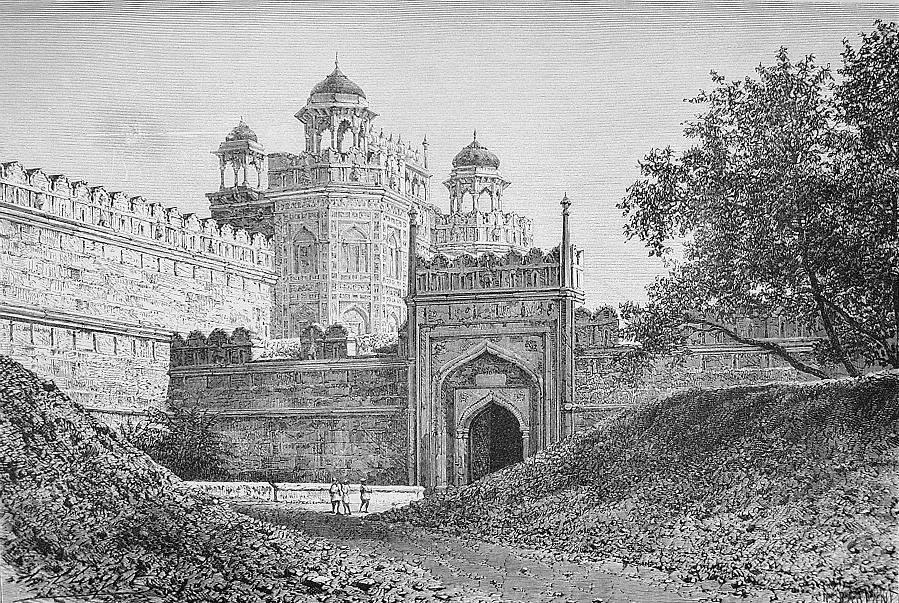
The Red Fort, Lahori Gate, a wood engraving by Bickers & Son, London, 1878; *a very large scan of this engraving*
Source: ebay, Oct. 2001
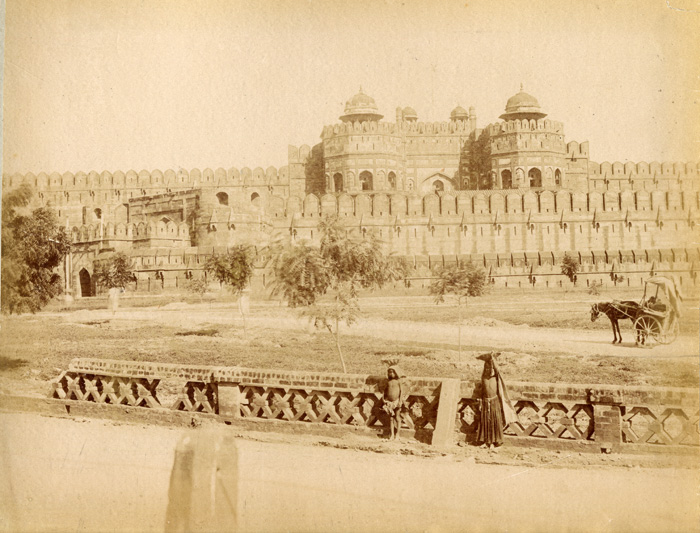
The Lahore Gate, in an albumen photo from the 1880's
Source: ebay, June 2005
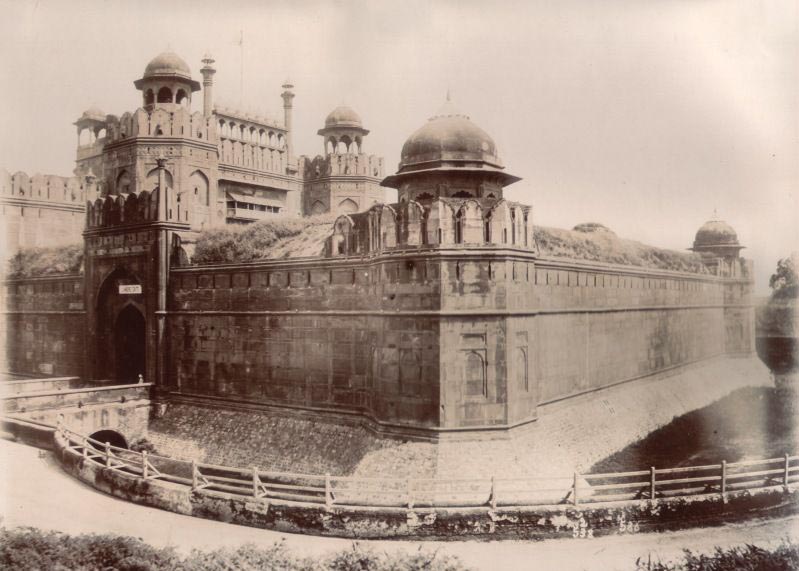
The Red Fort in Delhi: Lahore Gate (photograph, 1880's)
Source: ebay, June 2001
*Lahore Gate, an albumen photo, 1880's*
Source: ebay, Nov. 2005
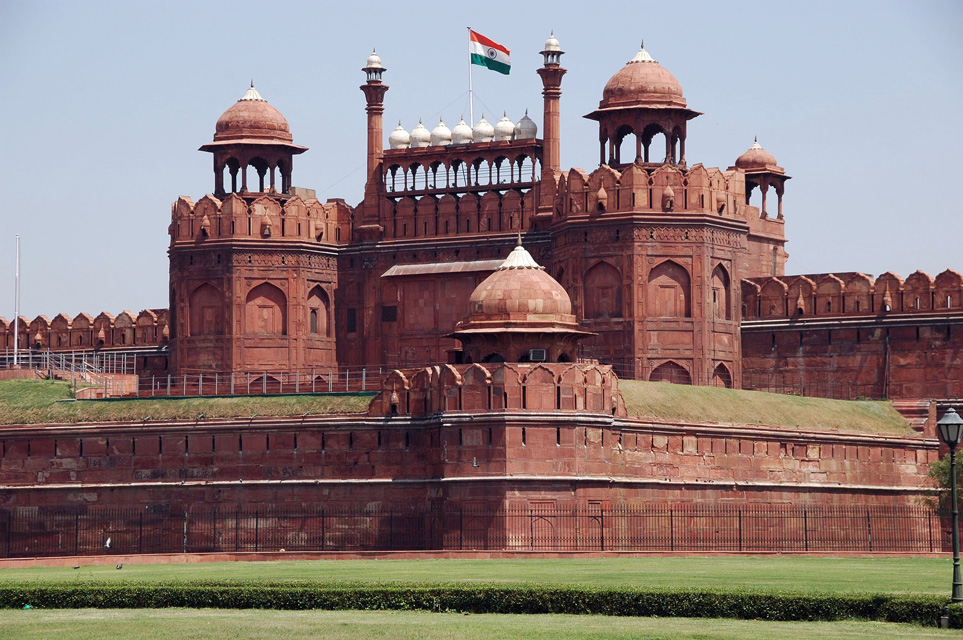
Lahori Gate
Source:
http://www.tropicalisland.de/india/delhi/pages/DEL%20Delhi%20-%20Red%20Fort%20Lahore%20Gate%20with%20Indian%20flag%203008x2000.html
(downloaded July 2005)
*Lahori Gate, with its modern security checkpoint*
Source:
http://www.tropicalisland.de/india/delhi/pages/DEL%20Delhi%20-%20Red%20Fort%20Lahore%20Gate%20with%20security%20checkpoint%203008x2000.html
(downloaded July 2005)
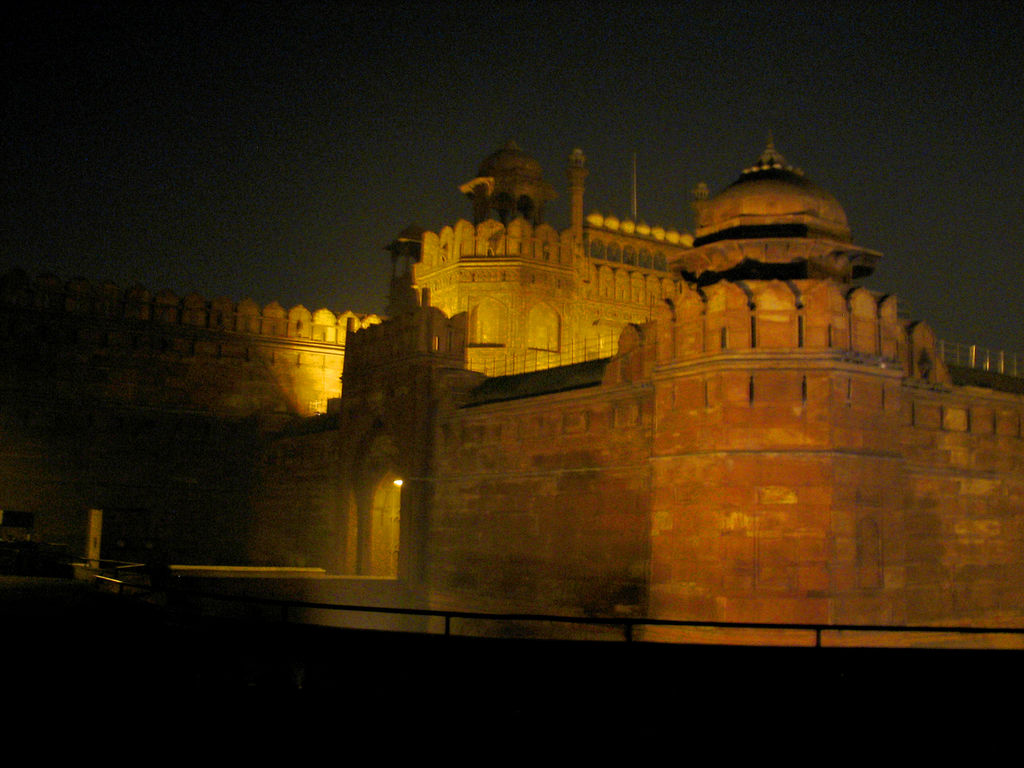
A night view
Source:
http://www.indiamike.com/photopost/showphoto.php/photo/17597/limit/recent
(downloaded Dec. 2007)
The most frequented gate of the Fort is entered from the Chandni Chauk, the most important street of Delhi. Aurangzeb protected the gate by a barbican, for, while the gate itself faces the west, the entrance to the barbican, which has a deep moat underneath, is on the north.... The Lahore Gate is lofty and arched; it is 41 feet high and 24 feet wide, contains three-storeyed rooms, and is flanked by half-octagonal towers, which also afford accommodation to the residents of the fort. The towers are surmounted by open octagonal pavilions; between the parapets of the towers, is the parapet over the centre of the gateway. Over the latter parapet is a row of seven small open ornamental arches, about 3 feet high, of red sandstone; over this there are seven miniature marble domes corresponding with the arches, and the whole of this ornamental balustrade is flanked by marble minarets, slim and tapering, crowned with marble ornaments shaped like a lantern. So far, the description of this gate applies [also] to the gate on the southern side of the fort, known as the Delhi Gate, and so called after the Delhi Gate of the city which faces the ruins of the Delhi of Sher Shah.
On entering the Lahore Gate, the visitor finds himself under a masonry arcade about 230 feet long and about 13 feet wide, having an octagonal court, about 30 feet in diameter, in the middle, for the admission of light and air. On the right and left of this little court, there are small gateways which at one time led into the most crowded quarters of the fort. Writing of this arcade, Bishop Heber calls it: "the noblest gateway and vestibule which I ever saw," "a long vaulted aisle like that of a Gothic cathedral entered through a Gothic archway, a fine arched passage about 300 feet long." On both sides of the covered arcade, there are 32 arched rooms on a plinth about 4 feet high, occupied as shops and once known as the Covered Bazaar, which may be seen now [in 1876] as Bernier saw it about 200 years ago.
--Carr Stephen, Archaeology and Monumental Remains of Delhi
(Author, 1876), pp. 218-19
== Indian Routes index == Indian Routes sitemap == Glossary == FWP's main page ==